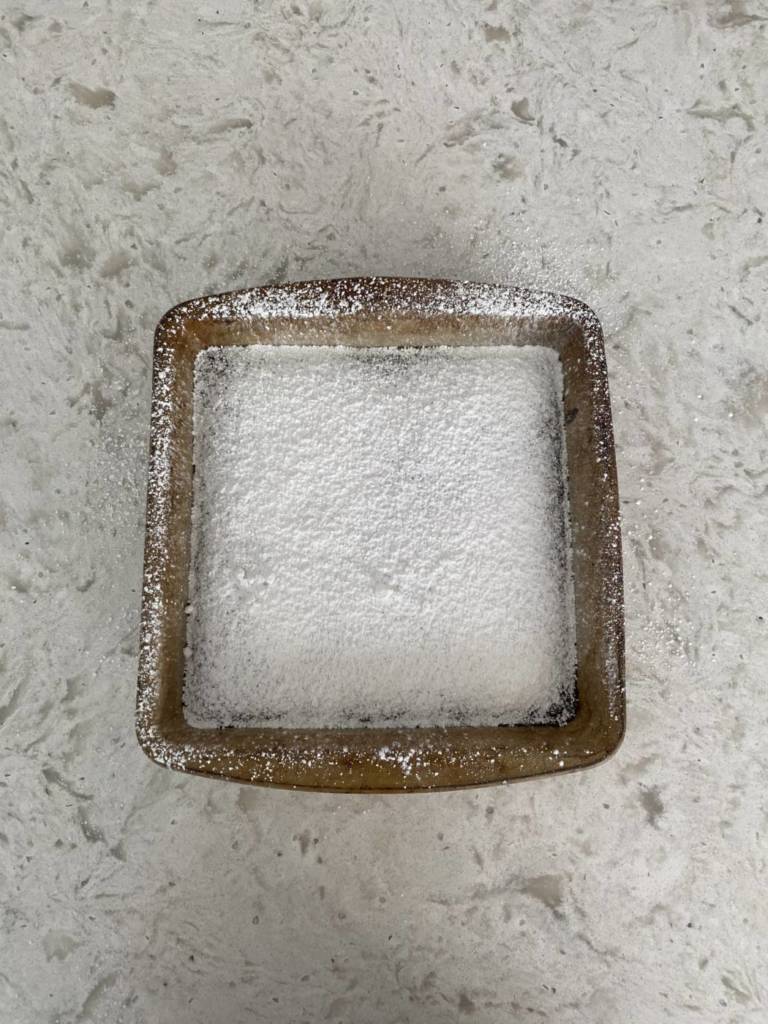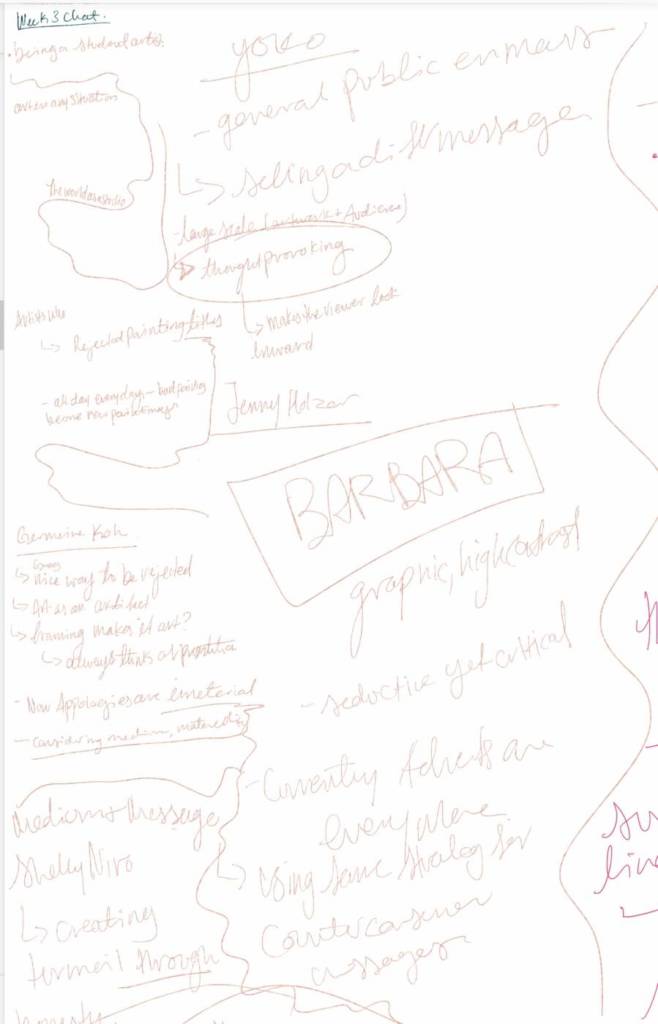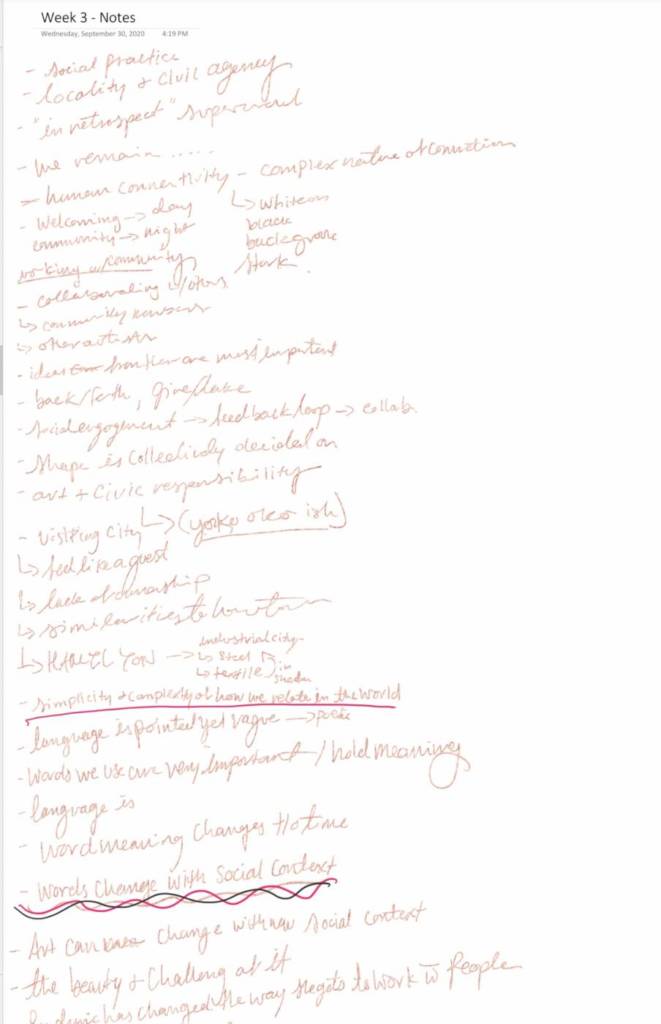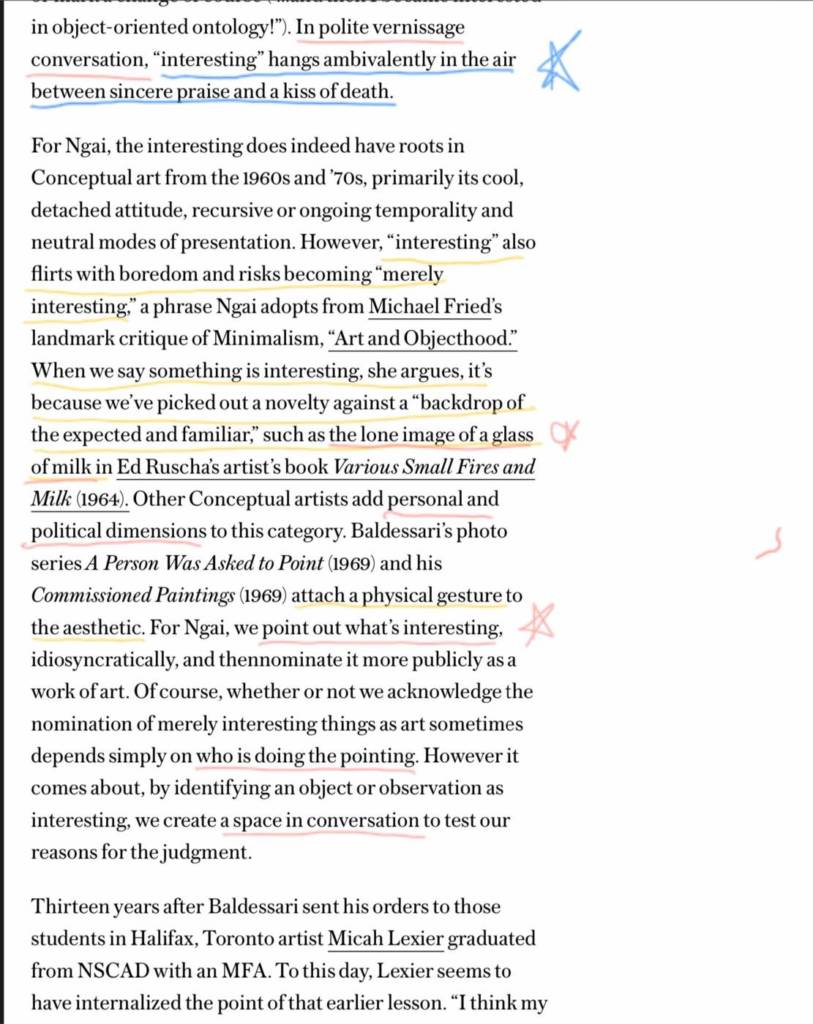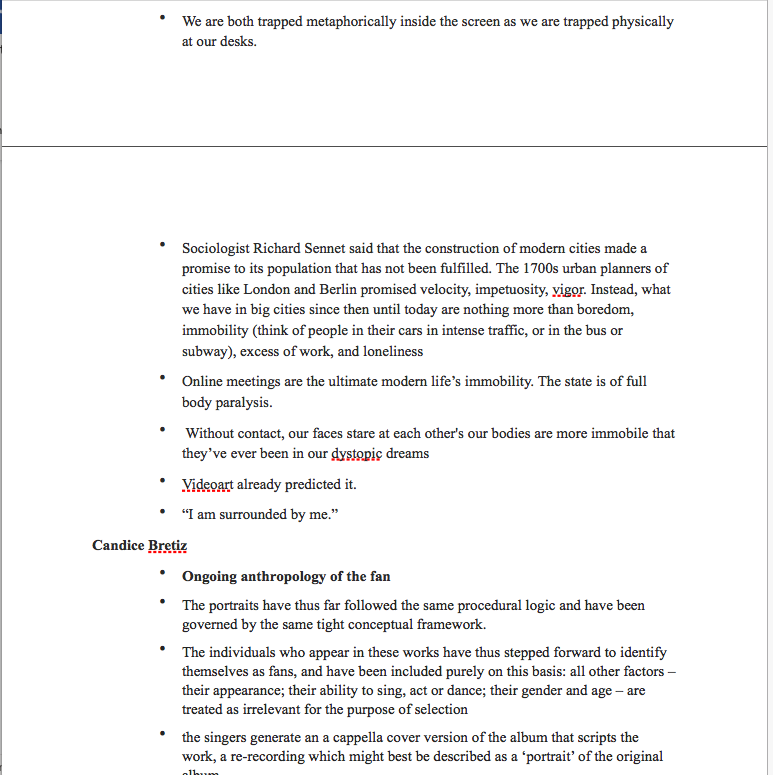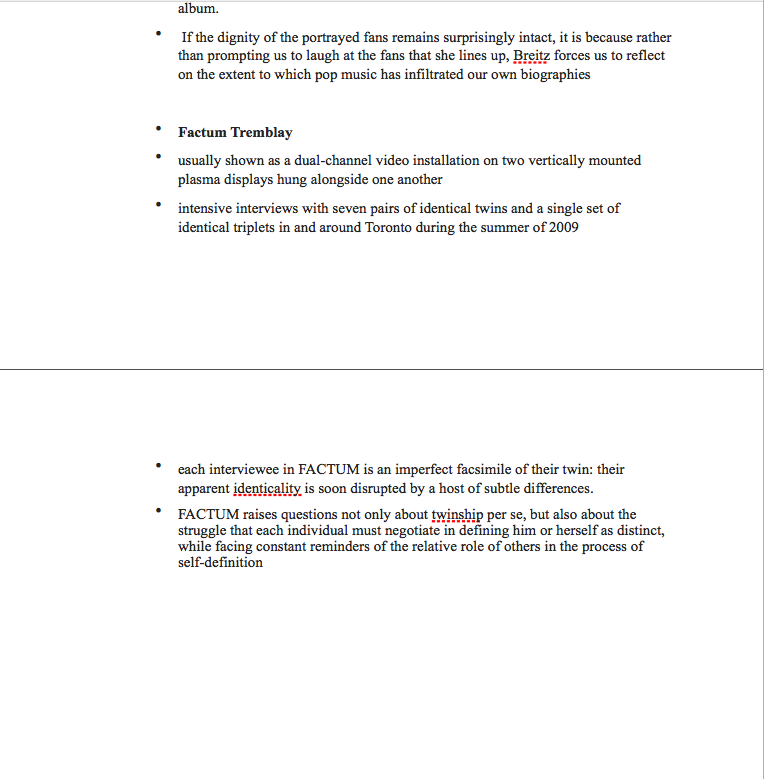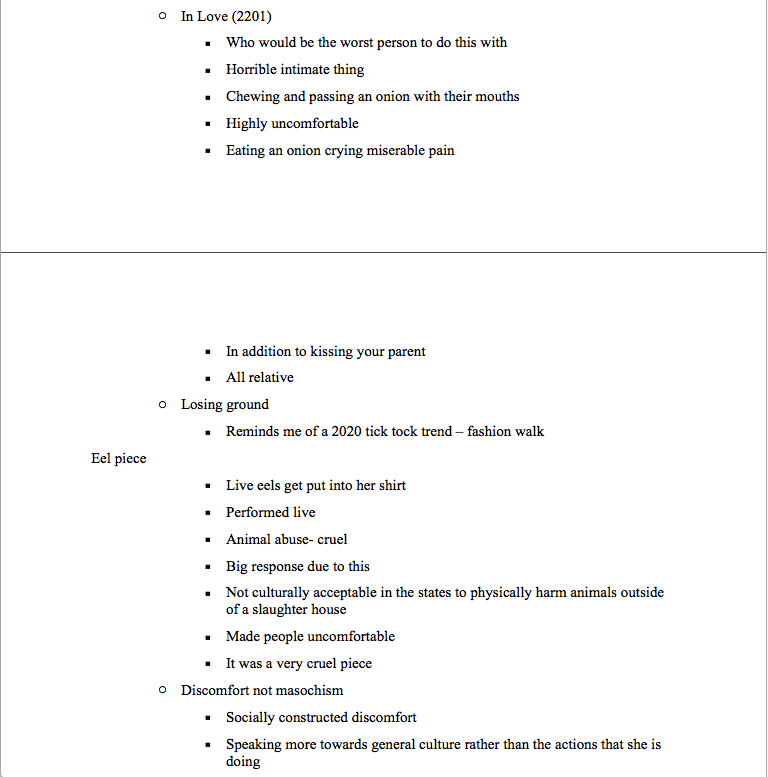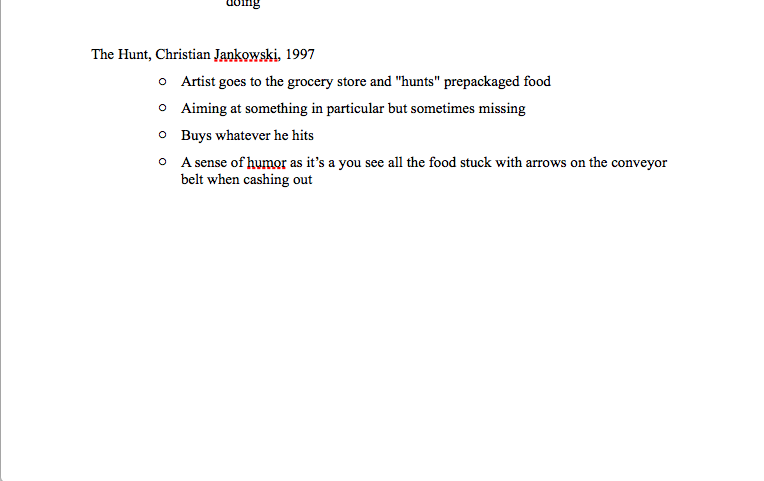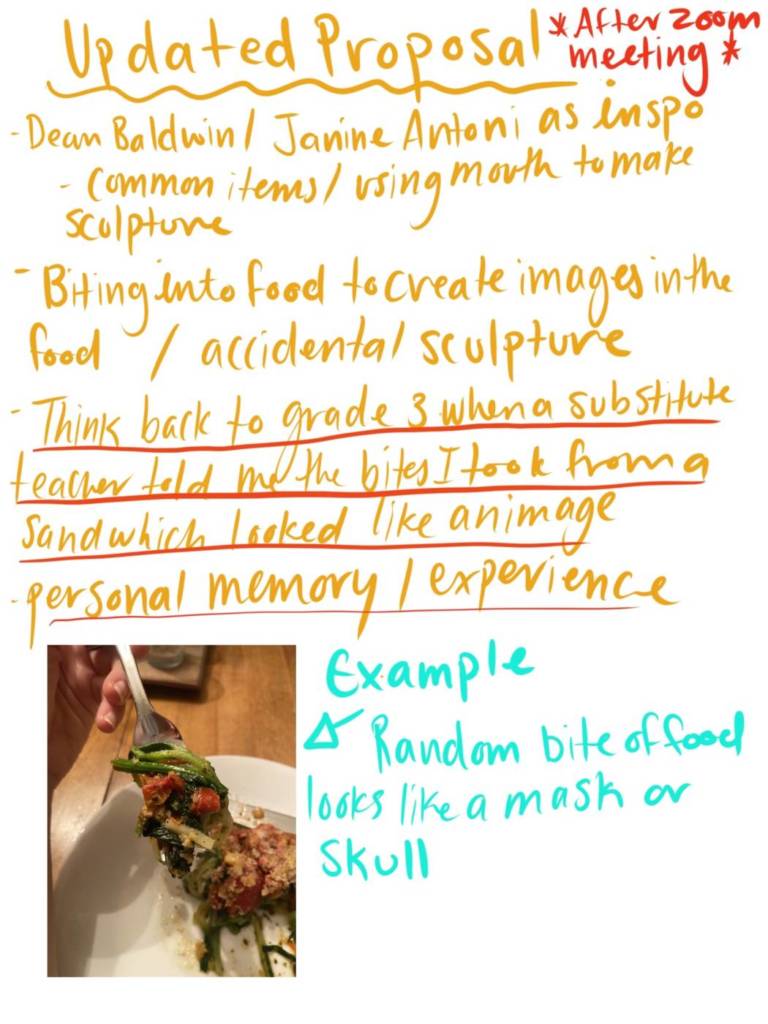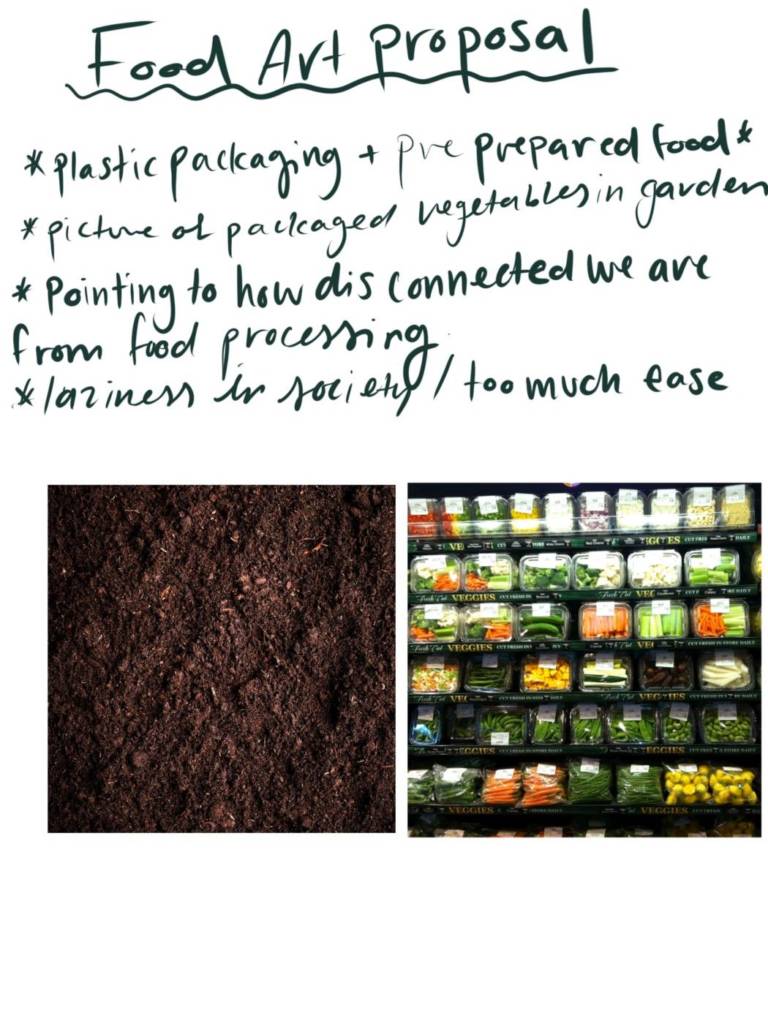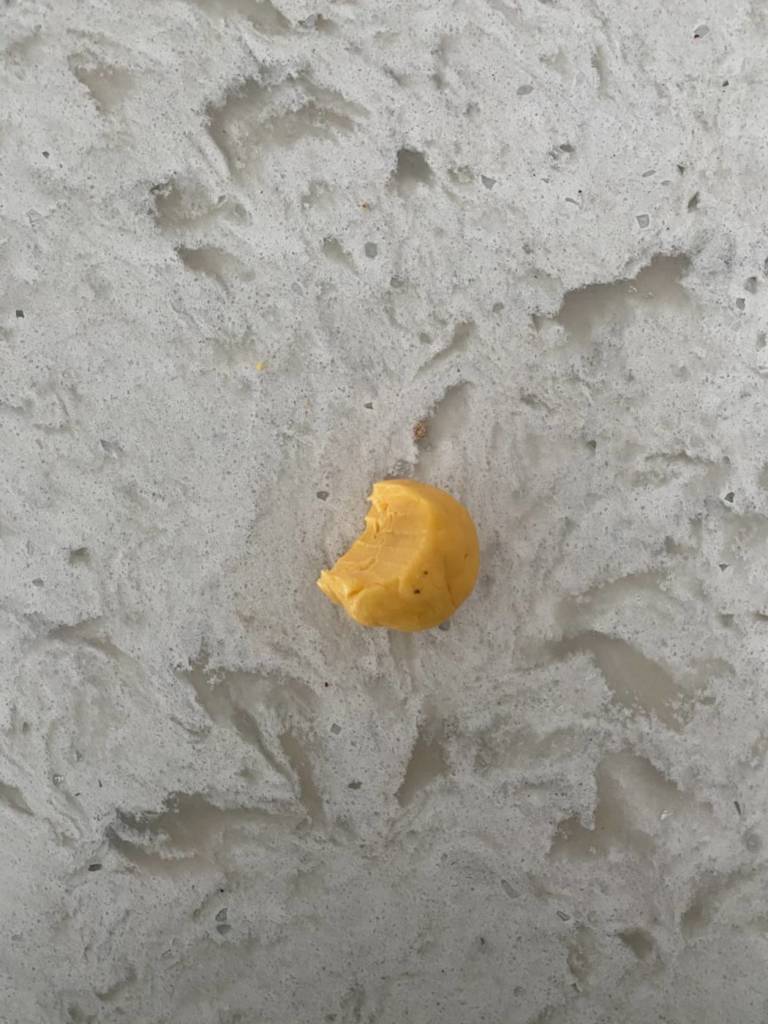
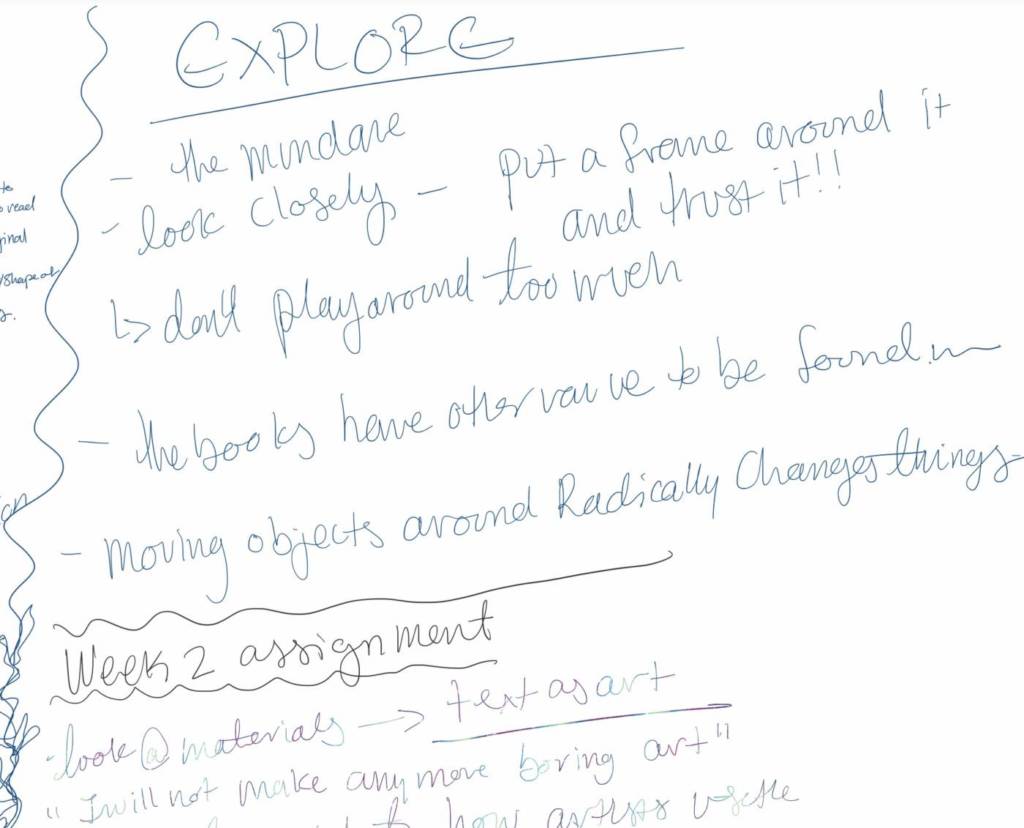

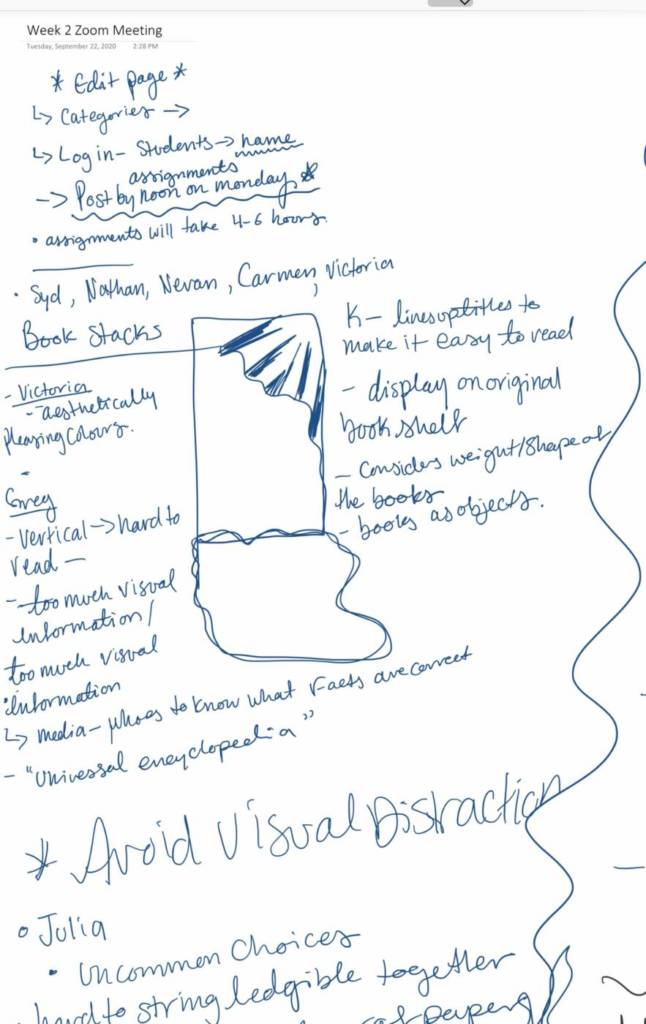


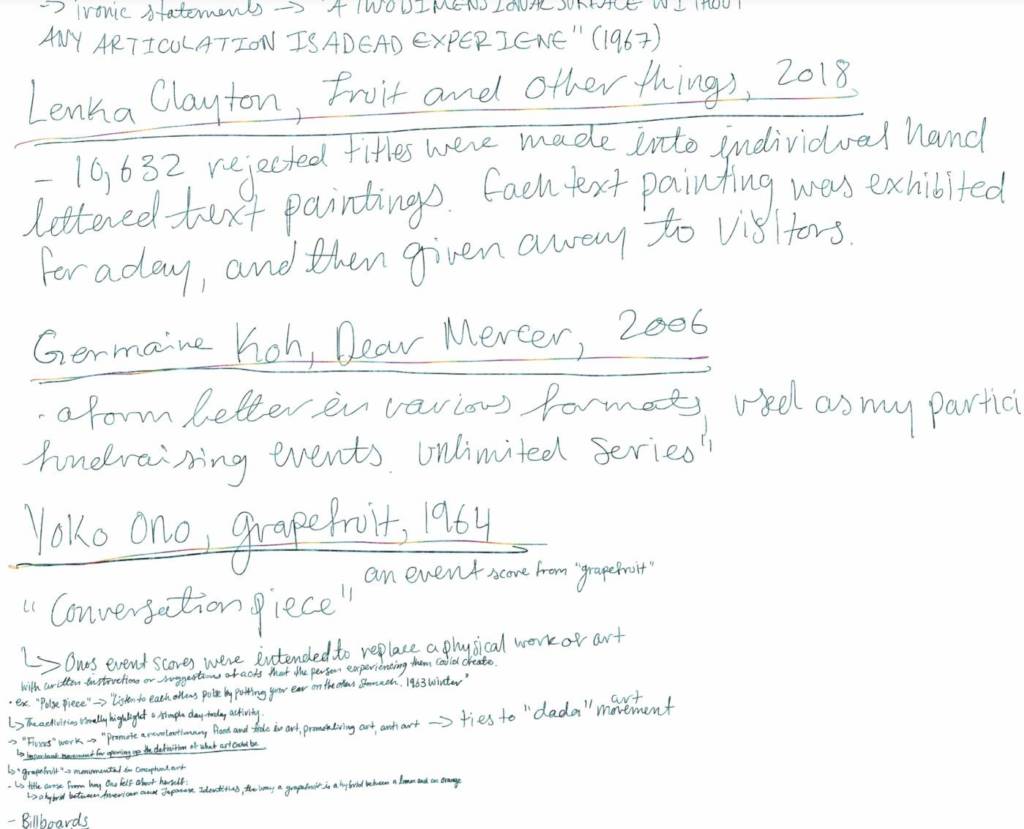



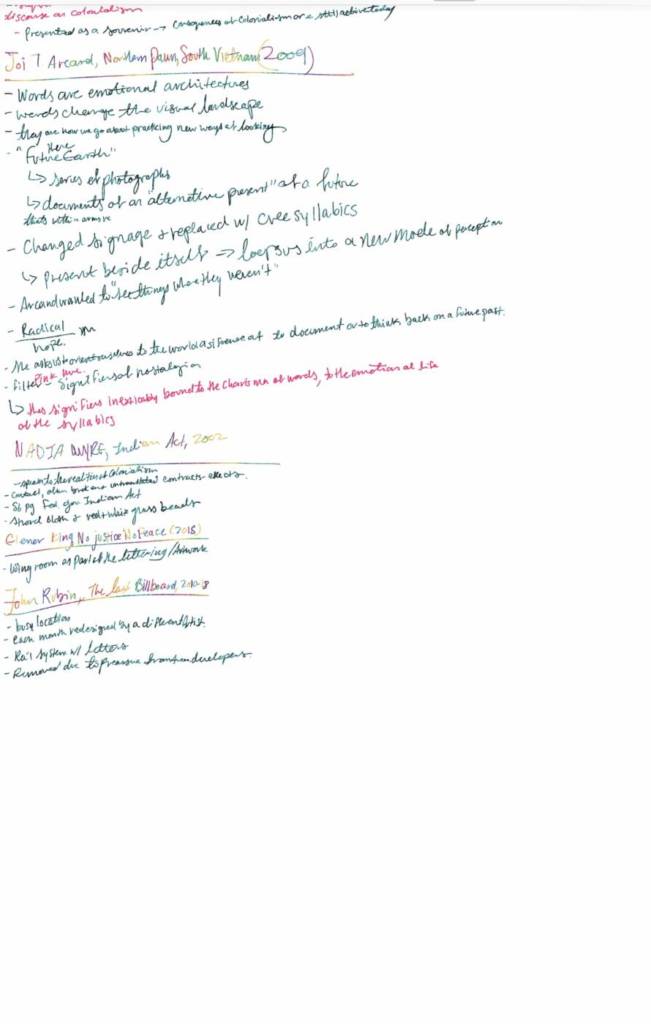
Week 2 Notes
Katchadourian prefers to have minimal prior knowledge on the collection she will be sorting, and lets the collection speak for itself and its owner. She sorts through titles looking for ones that are eye catching or repetitive. She often prints out copies of selected titles and sort and organize them in her studio prior to the real library. This was seen in her project “Once Upon a Time in Delaware/ In Quest of the Perfect Book”. Completed in 2010 as part of the sorted book project the books were part of a 2000 piece collection consisting of books chosen based solely off their book cover created within the 1918 to 1920. The titles chosen created a portrait of the innovative, adventurous, romantic mindset of America at the time. Katchadourin and Dyment use similar methods when creating their works. They both aim to create a new narrative between the book titles, independent from their content. The stacks are a representation of the collection as a whole. This can be seen in Dyments work “One billion years (Past and Future). The books independently cover a short period of time or are a moment representing a period of time, but collectively show time a billion years in the past an future.
My books are a selection from an old bookshelf in my basement. The bookshelf is used by my entire family, but the majority of its contents belong to my Mom and I. Initially I sorted through the bookshelf looking for titles that might work together and took a smaller selection upstairs to try different combinations. Like Katchadourian I wanted to convey a story between the chosen titles. For the last stack of books, I took into consideration how the first title is blurry, hoping to add a deeper level to the story. The final works display a love of crime and political novels, which is something my mom and I bond over.
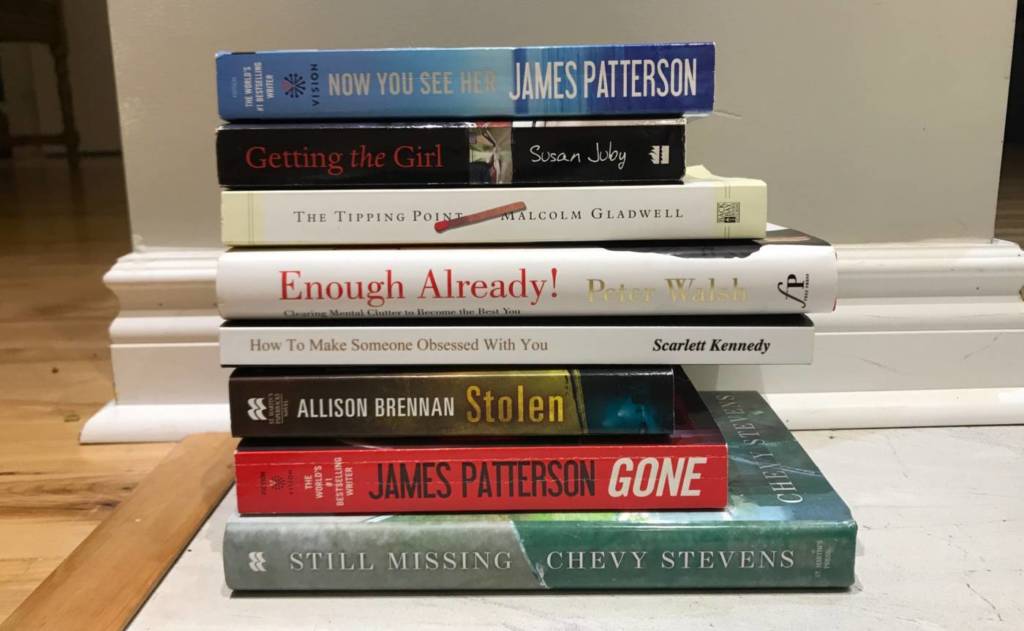


Week 2 Writing
The works I have chosen to compare are Shelley Niro’s “The Shirt (detail)”, 2003, and Nadia More’s “Indian Act”, 2002. The artists are both indigenous women who aim to highlight the dark realities of colonialism. The sentiments behind their artworks are similar but the their ideas are presented in vastly different mediums.
Shelly Niro’s “The Shirt (detail)” is a series of images of an indigenous artist standing in front of a picturesque American landscape wearing a tee-shirt stating “my ancestors were annihilated, exterminated, murdered and massacred … And all’s I get is this shirt”. The shirt was inexpensive and labelled an “archetypal tourist tee-shirt”. Overall the artwork demonstrates how indigenous lives were sacrificed for trivial objects and consumerist greed.
On the other hand, Nadia More’s “Indian Act” has similar sentiment but a much more time consuming medium. Nadia and over 230 volunteers stitched over the Federal Governments Indian Act, replacing words with white beads and spaces with red beads. The overall effect leaves the fewer unable to read the words, just like reading an untranslated contract.
The message behind both artworks come across strongly and are highly impactful.
When reading the article “Dirty Words” the sentence “Desire is thwarted by a series of logistical and moral obligations” really caught my eye. It hit home for me in many ways and I found it to be relatable in many aspects of my life. I hung my banner above a bed and had the bed frame peeking into the photo. In this context its representing a loss of love or passion in a relationship. However, I think the banner would hang well in many locations, whether it be in front of unfinished schoolwork, unfinished home renovations, or a list of good intentions.
We all have things we desire to do or things we desire to happen, and it is hard when you realize not everything you desire is actually going to work out. Even in regards to making the banner, my original idea was to paint every letter by hand. This ended up being highly time-consuming and logistically I had to change to large Sharpie. Eventually, I let the dark letters fade out to visually represent the lessening of desire.
Week 4 – Moving Portraits
I was able to take these videos behind the scenes at one of Fashion Art Toronto’s virtual runways. It was interesting to see how people interact and work with one another within the new limitations imposed due to the pandemic.
“Just being away from other people and everything I have been able to focus on myself I have become so much more confident and self-aware” – Lauren (Model, Right)
“Ya no my anxiety has been through the roof I feel trapped with it. This is the first time I’ve been out in the open and stuff” – Michaela (Model, Left)
I asked the hair and makeup team how the pandemic has affected their work.
“(Its) affected us in a way where we can’t work from home with this kind of job and it’s been really hard, and learning how to be virtual, and having to be tech-savvy when we’re people who work with our hands I have found it has been very challenging. Just being the person in contact and being the person who works with somebody and not being at home, ya I am very happy to be back at work” – Antonella (Hair Stylist, Centre)
“Likewise very excited to be back to work, and it is quite different how we are doing touchups without touching the person. So yeah everything is a new adventure now.” – Bindi (Makeup Artist, Left)
“It definitely forces us to become better artists with steadier hands” – Stephanie (Makeup Artist, Right)
Adad Hannah Questions
What kind of people does he observe?
- A wide range of individuals. Healthcare workers, painters, families, skateboarders, friends, protesters.
How are they different from one another?
- Occupation, high vs low anxiety levels, physical appearance, age demographics, group size, ways of life.
How do the portraits change over time?
- he admittedly started of scared and nervous but became bolder with every portrait. For example he started asking individuals to take photos in their homes.
How do the portraits witness important moments of the pandemic?
- These portraits show that while we are collectively trying to maintain distance from one another we are still connected. We are able to see ourselves within the portraits as we are all feeling alone.
- The portraits are also capturing an important political moment through documentation of peaceful protesters.
Week 6
Week 7

I will be discussing “Suck Teeth Compositions (After Rashaad Newsom) and “Be nice to me” by Pipillotti Rist and Michele Pearson Clarke
In “Suck Teeth Compositions” or “Shade Compositions” the artist used video to create a compilation of different individuals of colour “sucking their teeth”. It created a pattern of sound that is the same yet different due to each individuals flair. The piece was also shown in gallery on a mass scale that dwarfs the viewer. I think having the experience in gallery on massive walls was an amazing choice and made the piece much more successful than watching through a computer screen. The artist probably didn’t have to explain much to the performers as sucking teeth is very common in African American cultures. It is often used to show displeasure or annoyance. The artist probably just instructed the performers to do their best version of sucking teeth.
In “Be nice to me” the artist also used video but instead of having multiple people shown throughout the video it is only one performer. This piece has been reperformed, but I think that recording it and displaying it on video is highly successful. The video is disgusting, but in a way that makes you want to re-watch it moment by moment. The artist probably asked the performer to rub her face against the glass in a highly disorderly way, aiming to disrupt the beautiful face of makeup seen at the beginning of the video.
Zoom Artwork
For my zoom assignment I partnered with Nathan to do a socially distanced hangout. In the video we are showing what we have been doing throughout the lockdown to stay entertained. Like sitting in the same room with a family member or roommate before the pandemic, it is comforting to have someone online with you while you are doing things you enjoy.
Week 8
Breaking Bread



Bread is a staple in my everyday diet. Whether it be toast, bagels, English muffins or more. I have very fond memories surrounding the perfect slice of bread. Bread is also a staple in my household and extended family’s diet and traditions. If I think of my family members, I can produce many memories and stories involving bread.
The first story that comes to mind is that when my father was in university, he would have a tomato sandwich every day. Since hearing this story I began making them myself, as a university student truly relate to the bliss of this sandwich. It is simple and cheap, only contains tomatoes, mayonnaise, and bread.
As a family we often go to the restaurant Swiss Chalet. We have been going there for years and years and it was often a way to get together with my grandmother and great aunt before the passed away. Every meal that comes from them comes with bread rolls and we always share them as a family. Every time I eat this bread, I have memories of my grandmother and great aunt, and it is an emotional experience.
A nice memory involving bread is dipping fluffy white bread into butternut squash soup directly off the stove with my boyfriend on a chilly day. It was a very comforting and bonding moment, and the experience will be tough to beat.
I find it remarkably interesting that bread can be attached to such emotional and beautiful memories, and without it I might not have them.
I think baking bread has gained popularity during the pandemic because of how comforting it is. 2020 has been an extremely stressful year willed with unknowns, and bread is consistent. I also think it gained popularity because at the beginning of the pandemic people were not prepared with sufficient food stocks and began panic buying. This left grocery store shelves empty and people started to realize they needed to become more self-sufficient.
While there were many interesting things discussed in the podcast “the rise and fall of bread: a simple staple with a complete legacy,” but I will discuss two topics; comfort and civility. The podcast discussed how breaking bread increases comfort when meeting new people and promotes civility. According to the podcast, when we meet someone for the first time, we are looking for commonalities between us. If both individuals are eating bread, then they are moving their hands in the same way. Subconsciously this tells us that we are like this other individual in at least one way, increasing our comfort levels. The podcast also discusses that if individuals are in an argument, often when sharing a meal or sharing bread individuals will become more civil so they do not waste the bread.
Week 9
Food Art Inspiration
One artist that inspired my artwork isDean, Baldwin. I was specifically inspired by Baldwin’s artworks “Explaining Richard Serra Sculpture” and “Attempt at an Inventory.” In class, we discussed these works, and I enjoyed the playful way Baldwin used common everyday foods. It demonstrated that contemporary art does not necessarily need to be sophisticated to be impactful.
I was also inspired by Janine Antoni’s artwork from her “Lick and Lather” Series. I was so intrigued with how she used her teeth and tongue to create sculptures, with every bite mark and lick being unique to her these works are truly one of a kind.
I took a little bit of inspiration from both artists by using food that is common to me and using my mouth and hands to create my final images.
Week 10 Food Art
“Particularities” 2020
Everyone has a unique relationship with food. Some people do not like different foods touching on their plate, or they do not like the crust on their bread. There are even individuals who are fussy eaters and stick to a select few foods that they find comforting. The snacks depicted in the images above are snacks that have been prevalent throughout my life. Whenever I eat them, I always follow a routine. It has turned into a type of ritual, a moment to enjoy for myself. These photos are a look into my personal relationship with food.
I believe this artwork has the potential to grow into a series of works and could be expanded to involve more people and video work. For example, I think it would be interesting to film 50 people and ask them to eat the same item and see what the most common method is and what are the outliers. Additionally, I could interview individuals and have them bring foods that they have a unique relationship with and documents their process when eating the food.
My Artwork evolved from my second idea to incorporate my personal experiences.
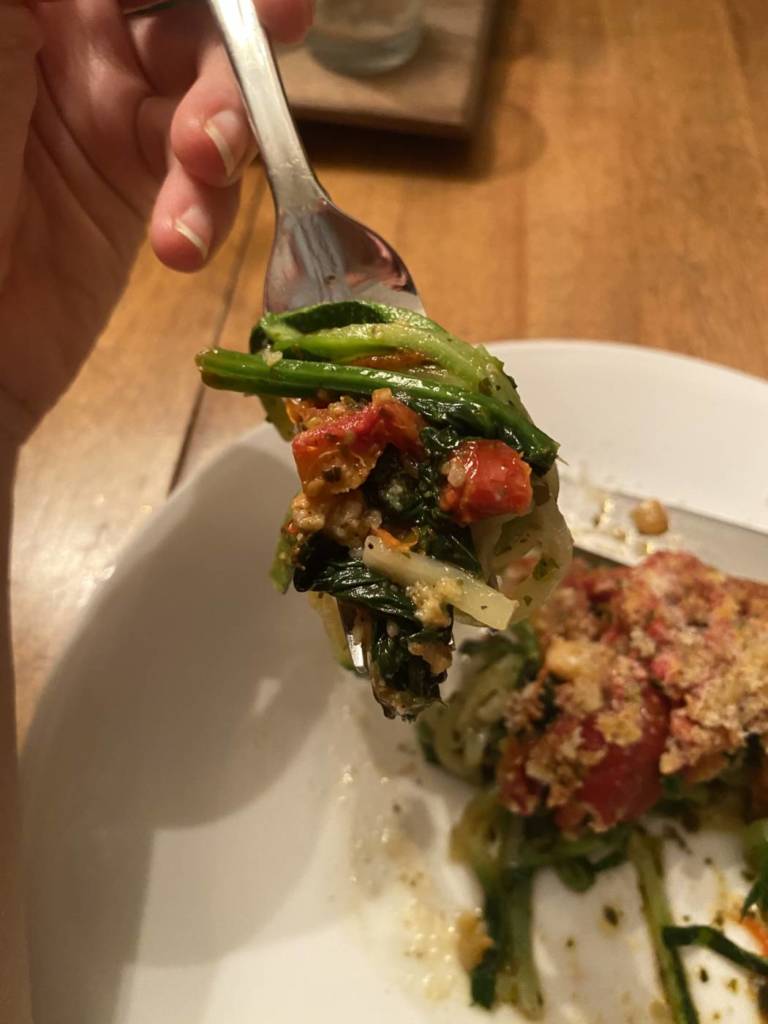
Chocolate Cake

